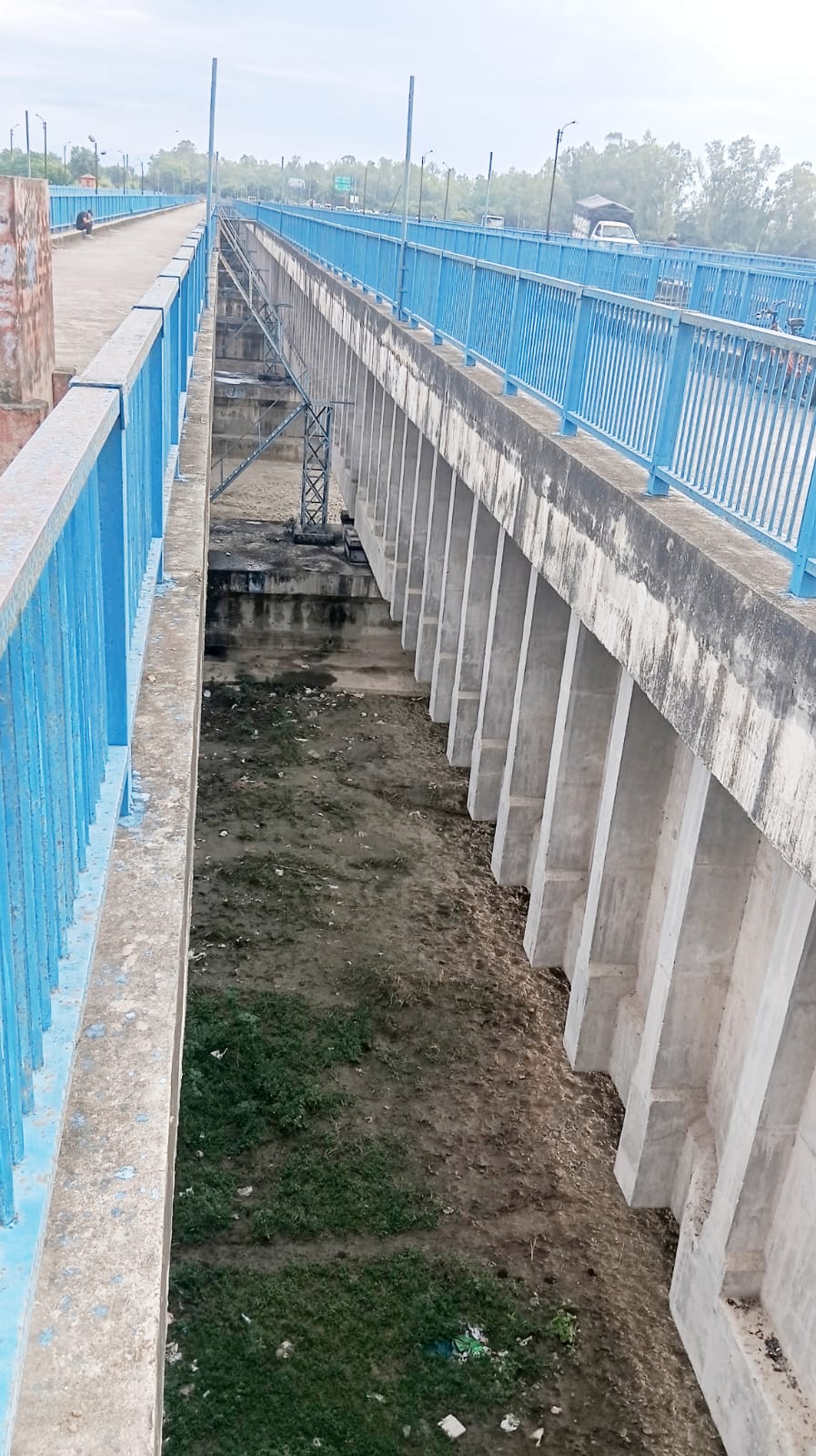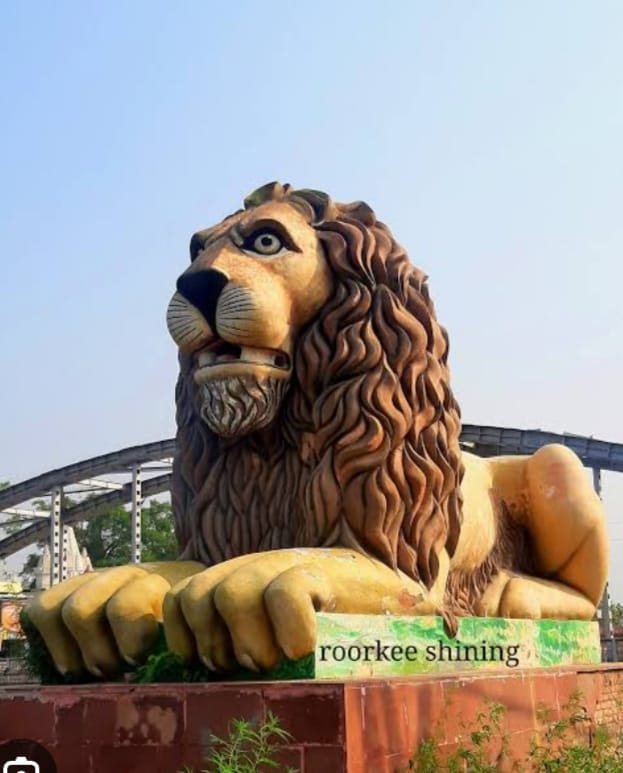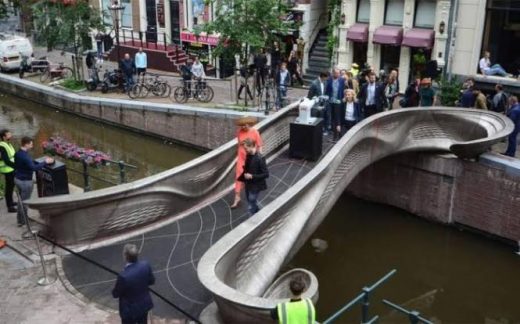By
Kaushal Kishore
Materials Engineer, Roorkee
The new Solani aqueduct on Ganges canal Roorkee was built with prestressed concrete which allows for longer spans and a simple more robust design compared to old bricks, lime- surkhi mortar masonry arches of the old aqueduct, in which 8.5 crores bricks were used, while iron railing used in the sides of two lanes were imported from England. This is interesting to note that materials bringing those days on ship from England to Indian ports take 6-10 weeks via the Suez canal or 3 to 6 months via the longer Cape of Good Hope. Calculate in it also time taken on road from Indian ports to Roorkee.
After retirement from University of now IIT Roorkee I joined M/S Roffe Construction Chemicals Pvt.Ltdd, Mumbai as it’s Chief Concrete Technologists afterwards I became it’s one of the Director.

AQUEDUCT picture taken on 7/10/2025
For the contractor of above aqueduct I designed M-40 grade of concrete with Roffe superpladticizer. Those interested may read my paper by visiting Google site and log in; Civil engineering portal The Ganges canal by Kaushal Kishore.
I had designed numerous concrete mix design almost all cements of India in this I find Utra Tech cement as one of best cement OPC and PPC both With Ultratech cement I had designed numerous concrete mixes from ordinary strength to M-80 grade concrete, self compacting concrete, shot crete concrete, fibre reinforced concrete, fly ash concrete and more There is life after retirement and after retirement I worked for 30 year’s which includes in free time working in home research and testing laboratory and numerous construction sites visits almost all India and outside India. At my age of 92 years I still work for 12 hours daily.
I had never worked for money. In spite of doing so gigantic work what to say about car I even do not have 2 wheeler not any of my house not a single inch of land in this world only pension from IIT Roorkee and few clothes


























Hi friends
I am civil engineer too.I am happy that conect with you . please give me new information about civil engineering.thank you.
I am a 1st year student in civil engg, avarage mark
how much chance to get a job
Pls, i want you guys to help me with details on compaction of laterite soils for sub-grade, sub-base & base-course, including their standards and specifications. THANKS
what are the best ways of determining NATURAL MOISTURE CONTENT of a given soil sample. THANKS
The best method of NATURAL MOISTURE CONTENT IS BY calcium carbide METHOD it is also called
Quick determination of moisture content.
Its very simple to determine the water content of a soil sample….
1-Take a evaporating dish and get its initial weight
2-place the wet soil sample in it and weight it
3-keep it in oven for 24hrs to dry
4-weigh the dry soil after with the dish
5-the weight of water divided by the weight of dry soil and multiply the answer with 100
you will get the water content in %
this is the simplest way to find water content
sir;
please send me the information about planning of residential building .@ other planing tips .I AM CIVIL ENGINEERING STUDENT SO PLEASE SEND ME THE INFOR MATION
I WISH I COULD BECOME CIVIL ENGINEER
I Want to know the types tender with brief notes.
AM WORKING IN A FAMILY CONSTRUCTION COMPANY ND I WISH TO LEARN MORE ABOUT CONSTRUCTION ND CIVIL ENG.
sir;
what is the effect of plastic on concrete?
plastic will avoid joint between the concrete and itself it behave as a crack.
friend plastic is not give a big change in strength of concrete.but we introduce admixtures during mixing bonding only increased.
dear friend, here is a big question- what kind of use plastic? as a plasticize material or Waste material? if it is waste material, it will make restrictions for bonding between aggregate and cementing material and concrete goes to low strength but if it works as a plasticize material, it fills voids after born due to evaporation of water. it is also called plastic fibers.
dear Rea ……actually at this time i am nat very clear about ur ques whether u are asking for effect after using plastic in casting of concrete or external efffect …….so make it very clear. are u a student of civil engg.?????????…………….
What are the necessary things needed to start a construction company? Pls send me some suggestions
dear all,
where is the best location of the lift core if we consider the building is in L-shape. tq
it should be at joint of L because it will be convenient from all the side to travel equal distance
wat is the method of concreting in cold & hot whether coditions
i am doing b.e. from civil engg. what is scope in it?
why is cylinder strength less than cube strength of concrete
Concrete cylinder and cube specimens for compression testing were compared through a survey of past research, including testing procedures, factors affecting the cylinder/cube strength ratio, and conversion factors and equations. The main difference between cylinder and cube testing procedures is capping. Cylinder ends are usually not plane or parallel enough to mate properly with platens of compression testing machines, and thus must be capped with sulphur, neoprene, or other suitable material for proper distribution of the applied load. Cubes, however, are not capped but cast in rigid molds with sides that are plane and parallel. When tested, they are flipped on their sides so that machine platens mate properly with cube surfaces. Factors affecting the cylinder/cube strength ratio are 1) casting, curing, and testing procedure; 2) specimen geometry; 3) level of strength; 4) direction of loading and machine characteristics; and 5) aggregate grading. Past efforts to determine empirical conversion relationships and conversion factors have shown that it is difficult (if not impossible) to predict relationships between cylinder and cube strengths. Past research has also shown the cylinder/cube strength ratio to be between about 0.65 and 0.90, although ratios outside that range have also been observed. Based on this survey of past research, replacing cylinder testing with cube testing is not recommended. This i saw in a research paper…jst for ur info….. Regards, Ganesh
Can anyone say how the water bars are helpful at construction joints in the water retaining structures..how is it designed?
Water stop compositions and methods of preparing same are disclosed. The compositions exhibit a controlled swelling or volumetric expansion upon immersion in water. The compositions swell about 5-8% after 1 day’s immersion and about 35-65% after 28 day’s immersion. A blend of fast acting sodium bentonite clay and a slower acting calcium bentonite clay contribute to this desirable controlled expansion along with a specific combination of thermoplastic elastomer, cross-linked butyl rubber components and polyisobutylene. Another important factor in providing the desired expansion is a thorough mixing step to ensure product homogeneity whereby mix components are blended in a Sigma mixer for an excess period of time after all components have been added to the mixer.
An exemplary water stop composition includes about 10-30 wt % elastomer, about 15-30 wt % filler, about 20-40 wt % plasticizer, and about 25-35 wt % water swellable clay, the foregoing percentages adding up to 100 wt %. The water swellable clay preferably includes 40-50 wt % sodium bentonite clay, with the remainder consisting of calcium bentonite clay.
This details i found in a website for ur info
Tell me new construction techniques used in India.
dear prafull thanx for urs alcarity to know about new construction techniques….so i will give u some thin in this regard what ever i have……….in prsent time our country is usin PRESTRESSED CONCRETE techniques in almost all the constructionn work along with TMT STEEL BARS. I am not exaggerating my knowledge so i will tell u some thin that in government sector the civil engineers are still using the old construction techniques…………..so i think u should learn more about the PRE STRESSED construction techniques. So get it as sson as possible…………………………….wish u all the best for ur carrier…………….good byeeeeeeeeeee
hello,
dis is shahnawaz….
iam studing civil eng….hw will be the civil eng future…
i am student of high school now but iwant tobe an engineer specially civil engineer
dear Ataklti i am very pleased to see ur alcarity to be a Civil Engg. Actuallly i am also a student of civil engineering (Final year). And i also got job in a construction company named SIMPLEX INFRASTRUCTURE LTD. I am very much passinate about motivatin others to be a civil engg. so fist thing which i want to suggest you that u intially finish ur 11 and 12 class with a good marks in Physics, Maths, Chemistry,English, because without having good knowledge of physics and maths no one can become a good and successfull civil engineer. so grab all these thing.then crack any of the engineering entrance examination to get admission in any reputed engineering college so that u can achieve ur dream goal. So ………….all the best and best wishes for ur carier……….just do it………go ahed…………..good byeeeeeee
anyone could u help me which web sites are needful for get the information about civil engg